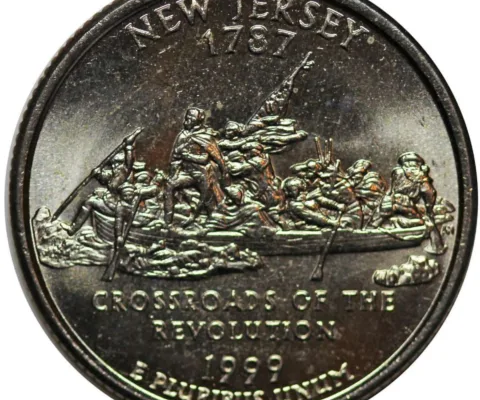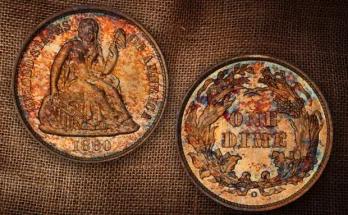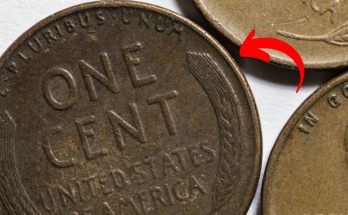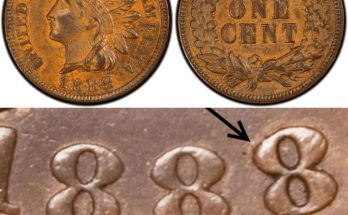Have a 1999 New Jersey quarter? If it has any errors, it might be pretty valuable!
But what types of errors can you find on a New Jersey state quarter? Are they rare? And how much is a regular New Jersey 1999 quarter worth?
In this article, I’ll answer all of these questions, including:
- What are the values of all 1999 New Jersey quarters?
- How much are New Jersey state quarter errors worth?
- Are any New Jersey quarters rare?
- How many 1999 New Jersey state quarters were made?
So, read on to get the answers you’re looking for and find out some cool facts and fun trivia about these popular 1999 quarters!
The Rarest & Most Valuable 1999 New Jersey Quarter Error
The most valuable New Jersey quarter error was struck on an experimental golden-colored planchet (or coin blank) that was intended for the Sacagawea dollar coin.
One example of the 1999 New Jersey transitional planchet error quarter sold in 2016 for an astounding $3,760! (By the way, I still haven’t found one of these cool error coins yet after many years of searching.)
Why were these 1999 error quarters made in the first place?
Well, the story goes that the golden-colored planchets for the first Sacagawea dollars arrived at the Philadelphia Mint before the dies for the dollar coin. So, mint employees experimented with the new planchets by striking various 50 State Quarters on these planchets.
Hobbyists believe about 15 of these transitional 1999 quarter errors exist. So far, they’ve been found among the first 5 states represented on 1999 state quarters (Delaware, Pennsylvania, New Jersey, Georgia, and Connecticut).
So, how can you tell if you have a 1999 quarter that was struck on an experimental planchet?
One of the first clues is the color of the coin. If your 1999 New Jersey state quarter is yellow or gold in color, it’s worth having the coin evaluated further by a numismatic professional. They’ll likely test the metal for the presence of manganese — which is found in Sacagawea dollar planchets.
If the coin tests positive as having been struck on a Sacagawea dollar planchet, then you have a valuable error quarter potentially worth thousands of dollars!
MUST READ: All About Transitional Error Coins
Other New Jersey Quarter Errors
In addition to the New Jersey ‘gold quarter’ mentioned above, there are many other kinds of cool valuable errors to look for.
Here are a few:
- New Jersey state quarters struck on the wrong planchet — Find an extra small New Jersey 1999 quarter? It may have been struck on the wrong planchet. Collectors have found rare state quarters struck on metal blanks intended to be made into pennies, nickels, and dimes. The value of a New Jersey state quarter struck on the wrong planchet generally ranges from the hundreds to thousands of dollars apiece.
- Doubled die New Jersey quarter errors — New Jersey doubled die quarters with minor doubling are common and worth $3 to $20, depending on how clear the doubling is. Pieces with much more drastic doubling are scarce and worth potentially hundreds of dollars.
- Broadstruck New Jersey state quarter errors — Sometimes coins are struck without the retaining collar that helps form the coin’s rim and edge reeding. When this happens, the coins are normally larger in diameter and thinner than usual. Broadstruck 1999 New Jersey quarters normally sell for $50 to $100, depending on the condition of the coin.
- Off-center New Jersey quarter errors — Off-center quarter errors are relatively common. Generally, they’re worth $5 to $20. However, off-center errors that are off center by 25% to 50% or greater are quite rare and worth much more! The value of an off-center New Jersey 1999 quarter depends on the degree to which they are off-center and the overall condition of the coin.
- New Jersey state quarters with die cracks — A 1999 New Jersey state quarter with minor die cracks or die breaks may be worth $3 to $5. Some are worth more if the die cracks are significant and involve a major part of the design — such as Washington’s face or the boat on the reverse (tails side) of the New Jersey state quarter
How Much Are Regular New Jersey State Quarters Worth?
So, I know you’re looking for those rare New Jersey quarter errors. But what if you can’t find any in your pocket change?
How much are normal New Jersey state quarters without errors worth?
Here’s a rundown on New Jersey 1999 quarter values:
- All regular, worn specimens found in circulation are worth their face value, 25 cents.
- Uncirculated 1999-P and 1999-D New Jersey state quarters are worth 50 cents and up.
- Copper-nickel clad proof 1999-S New Jersey quarters struck at the San Francisco Mint are worth $2 to $5 each. Since these were struck only for coin collectors and sold in proof sets, they were not intended for circulation. (NOTE: Sometimes proof sets are broken up and the coins are spent as regular money. Worn proof New Jersey state quarters may fetch 50 cents to $1 apiece.)
- 90% silver proof 1999-S New Jersey quarters are worth around $5 to $10 each.
New Jersey State Quarter Facts
New Jersey became the third state honored in the 50 State Quarters program. The series, which ran from 1999 to 2008, represents all 50 states in the order they were admitted to the Union — beginning with Delaware.
Here are some neat facts and fun trivia about the New Jersey 1999 quarter and the state it recognizes:
- The New Jersey state quarter was released on May 17, 1999 and was struck for approximately 10 weeks.
- The Philadelphia Mint struck 363,200,000 quarters while the Denver Mint struck 299,028,000 pieces. In all, the United States Mint made 662,228,000 New Jersey quarters for circulation.
- The San Francisco Mint produced 3,713,359 S-mint proof copper-nickel clad New Jersey quarters. There were an additional 804,565 90% silver proofs struck.
- Who designed the New Jersey state quarter? John Flanagan originally designed the obverse (heads side) of the Washington quarter in 1932, and William Cousins modified the design in 1999. Meanwhile, Alfred Maletsky created the reverse design depicting George Washington and members of the Colonial Army crossing the Delaware River to score major victories in the Revolutionary War. This design is based on the iconic 1851 painting by Emanuel Leutze called “Washington Crossing the Delaware.”
- New Jersey is known as the Garden State. The name was suggested by New Jersey Attorney General (and Camden resident) Abraham Browning, who gave a speech on August 24, 1876 at the Philadelphia Centennial exhibition on New Jersey Day.



